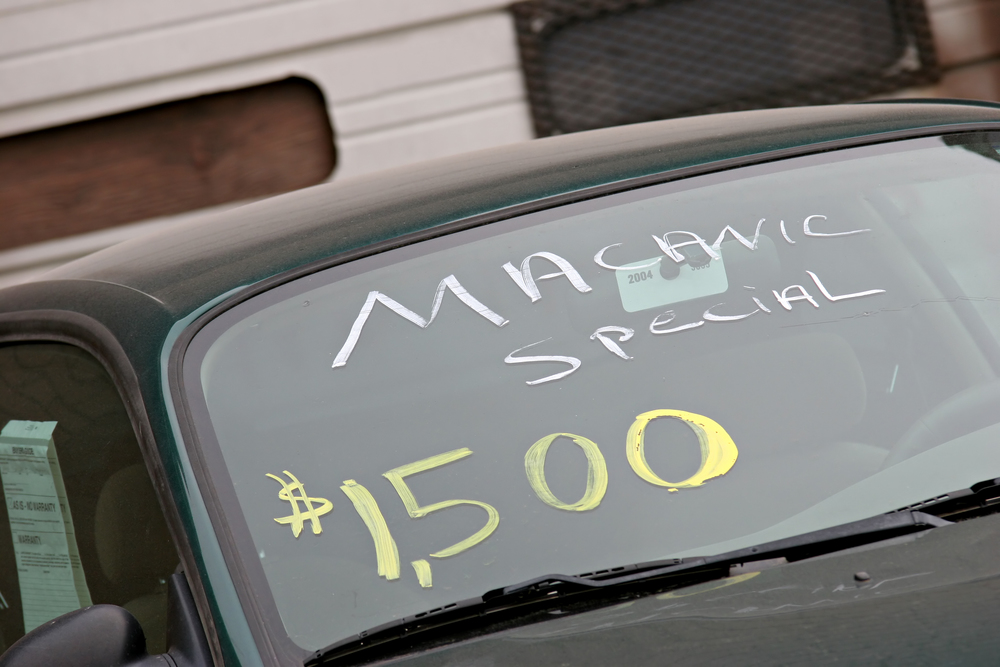There are a number of things that can reduce the value of your car – and some of them might surprise you. In this article, Ride Time will take a look at the top 5 factors that may damage the value of your car when it’s time to sell it, or trade it in. Let’s begin.
1. Accidents
Perhaps this is not a surprise, but getting in an accident – even a fender bender – can have a serious impact on the value of your vehicle.
Your accident will likely be logged in CarProof, so prospective buyers will be able to see it if it’s more than just a scratch – and even a single accident can dramatically reduce the value of your car.
Dealers will likely offer you 20-30% less for your trade-in if a major accident is on its record, though you will likely get a better rate from a third-party buyer.
So drive safely and drive carefully – even a fender bender may reduce the value of your car quite a bit.
2. Serious Scratches And Dings
Scratches and dings on your car make it harder to sell to a third-party, and will lower its value on a trade-in. If you don’t repair the scratches on your car, a dealer or a buyer may assume that other important maintenance steps have been skipped.
Scratches are pretty much unavoidable, though. Eventually, your car will get scuffed. Often, an auto detailing and clear-coat restoration is enough to remove most scratches and dings, so before you try to sell or trade-in a used vehicle, we recommend getting it detailed and refinished.
3. Rust Spots And Body Deterioration
Rust spots are what can happen if you fail to repair a damage paint job. If a scratch goes through the paint and primer into the metal, it can easily begin to corrode – especially in the harsh Winnipeg climate.
If your paint is damaged, repair it ASAP – the best way to deal with rust spots and body deterioration is to stop them before they start.
In addition, you should wash your car every 2-3 weeks during the winter, when salt buildup on the roads is at its highest. You can also consider rustproofing your undercarriage, as this is where body rust often begins.
4. Skipping Maintenance (Or Failing To Keep Maintenance Records)
Nothing kills your car’s value faster than failing to keep maintenance records – especially if you are selling to a third party. If you can prove that your vehicle has had its oil changed regularly, is well-maintained, and is in good shape, you will get a much better price for it.
However, if you skip routine maintenance – or don’t keep comprehensive maintenance records – its value can begin to plummet quite quickly. So keep those receipts – whether you’re doing DIY maintenance, or coming to the Ride Time service centre.
5. Aftermarket Vehicle Add-Ons Or Changes
This may seem counter-intuitive. Why shouldn’t a $1,000 stereo system, or a $250 window tint add value to your car?
Well, the answer is that most people want a car to be as “stock” as possible when they buy it. This goes for dealerships, too. It’s a lot easier to sell a Honda Civic that’s still factory-standard, compared to a Civic that’s tricked out with a turbocharger, spoiler, body kit, and other aftermarket accessories.
Understand These Factors – Maximize The Value Of Your Used Car!
Even a used car is still a very valuable asset. So if you’re looking to maximize the value of your used vehicle, you need to keep these factors in mind. By following this guide, you can maximize the value of your vehicle – whether you trade it in to Ride Time, or sell it to a third-party buyer in Winnipeg!



No Comments